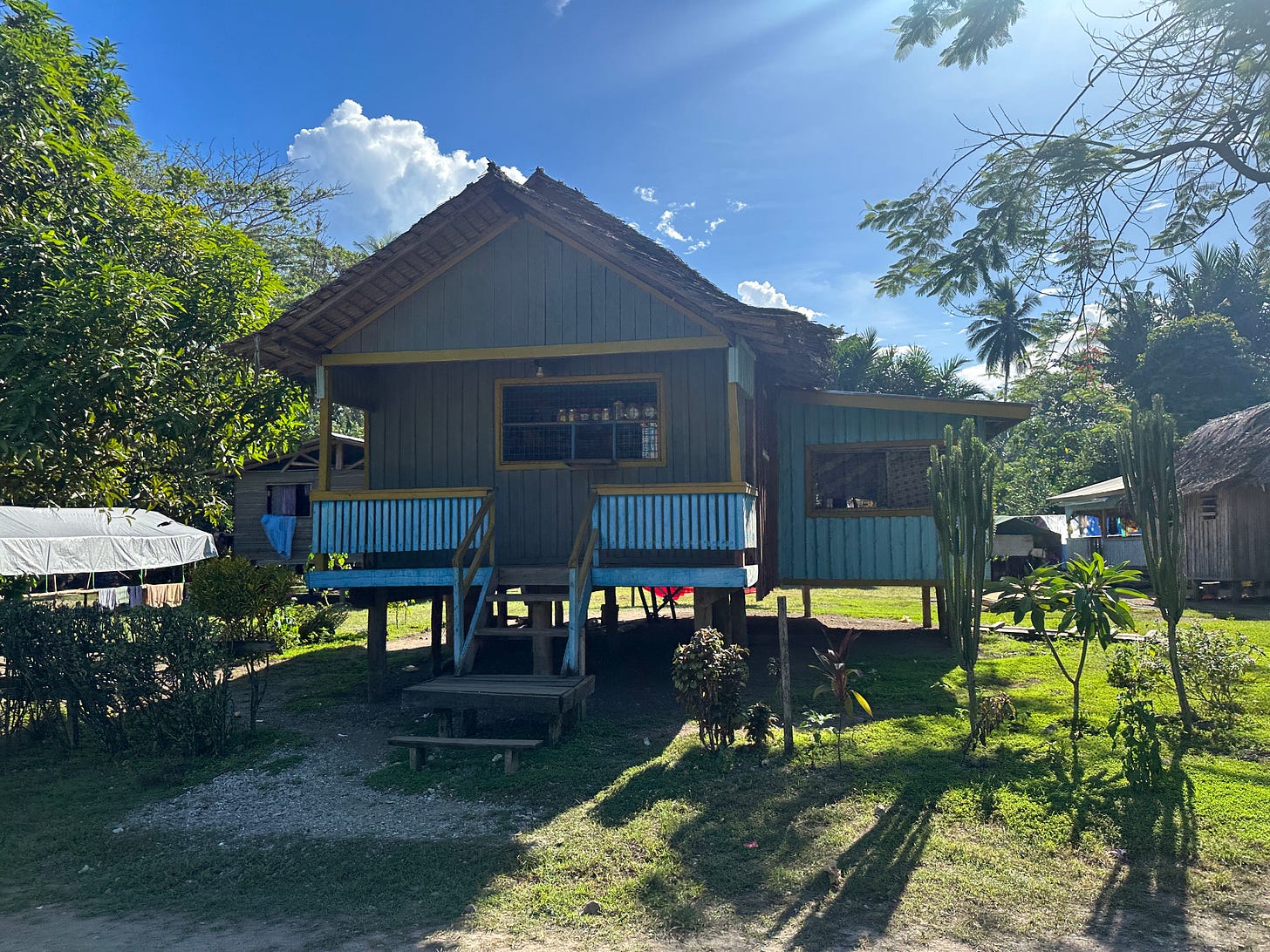
I had mocha chocolate cake for breakfast. That should set the stage for how the day unfolded … A true blessing it is to wake when your body does. Though as much as I would’ve slept into the depths of the afternoon, nearby construction buzzed and welded away. Not sure what’s more annoying, the sound of bugs, crickets, roosters, howling dogs or, city logistics of reversing garbage trucks, jackhammering next door or the ancient alarms on your cellphone.
Either way, after a few morning stretches and rolling from one bed edge to the other, I flung open the curtains and was delighted to be greeted by the sun – nearly three weeks into this journey. Hallelujah!
I mobilized and soon met up with my mate from yesterday. How easy it was to make friends in the Solomon Islands. I found Seggon outside the foreign exchange, the line bursting even more than the previous day “people are still waiting, they said the money is coming soon” he updated me.

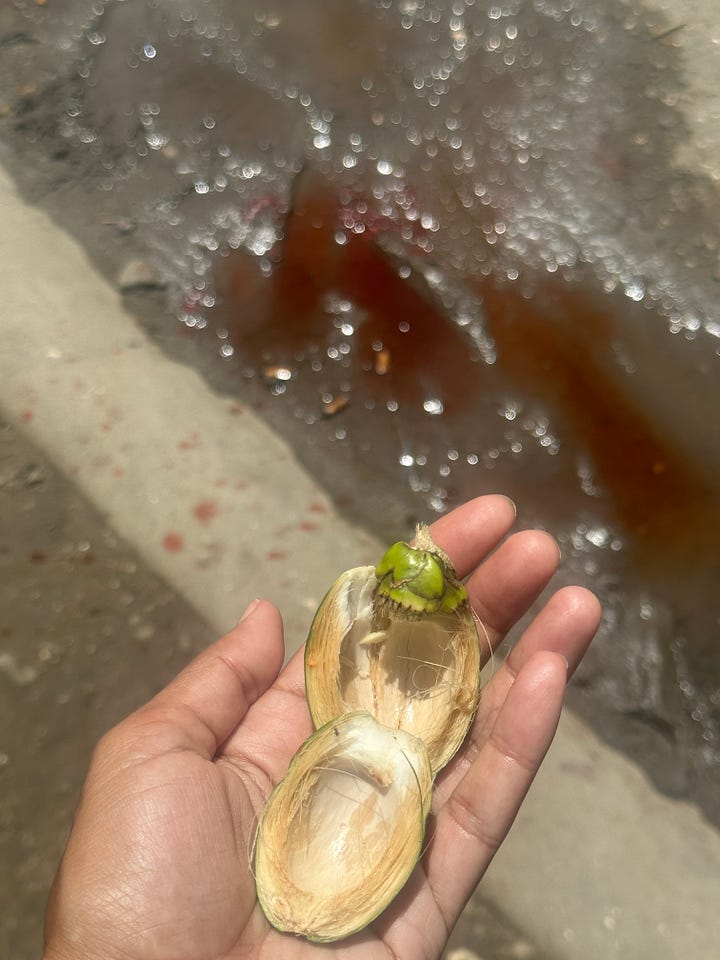
He was kind enough to take me back to the shops to do my swaps and then, we suddenly stopped when he saw someone. The next thing I knew, I heard hushed voices, a sideways trying-to be-nonchalant-handshake, then the exchange. He ducked away between nearby parked cars. From my peripheral vision, I saw a stick, white crystals, some scooping into the mouth, and after a quick spit, we were back on track.
Part of several cultures, betel nut takes many forms. In Honiaria, it’s illegal to buy or consume it within the city, with fines up to 2000 Solomon Dollars (~$250 USD) and possibly jail time for six months. Road stains are unmistakable from this (not to mention one’s teeth and lips). Nearby passerbyers can easily get splattered as folks fountain out their finished products, usually with no real aim.
Seggon and I reviewed the logistics of travel. I opted for the local mini bus over a cab, I could sense it wasn’t going to be a linear process either way. I planned to hop out at Mbonge beach, approximately 12 km from the city centre, but had to pay fare until the bus turned back 30km later at Vitale. Still a small price to pay, literally and figuratively.
At random moments, I could feel an innate kindness in the Solomon Islanders. Perhaps too, it was sizing someone up, a sliding scale of what we could offer to soften a circumstance. I wondered how actively and attentively I did this during my day-to-day …
After paying, the bus driver motioned me to hang tight and not board the bus. Of the two seats left in his minibus, he was going to fill the middle seat at the back and later ushered for me to sit on the side seat, next to the open window so I could “get a bit of air”… phew!
Next to me sat Tony, he was a retired community worker who shared details of the route, regular routines and the rough years of the war. He relayed that the previous affiliation with Taiwan that was “being corrected over the past three years” and how in this short courtship, China had funded the building of the stadium in Guadalcanal for the 17th South Pacific Games (SPGs), hosted for the first time in the Solomon Islands, the “Solo” way.
I hopped off at Mbonge beach and quickly met Paul, the uncle-type of guard who sits everyday to monitor the ins and outs (of approximately one to three cars). Aside from the solo car there with its doors open and music pouring out, there was no one else to admire this stretch of beach. Albeit not pristine nor white sand, I remained surprised somehow at how this ‘island hopping’ vacay had more hopping and less island-esque built into it.
Turquoise colours continued to shy away from the camera, but could be appreciated without the lens. Unlike the beachside novel in Vanuatu, this time, I just looked out at the sea, noticing the colour and shapes of the coconuts, I watched the clouds morph and favourite of all, I found branches to sit on that let the water come and caress my legs intermittently. When people say “wow, the water is warm as bathwater”, the thermometer in my toes agree - it actually was!
Soon, Irene came from her car, “just to say hi and see who you are”. A local Islander, she was volunteering for the past two weeks with the SPGs in the catering and hospitality department. Just as she finished telling me which countries were likely to win based on her guestimate of size and strength (with New Caledonia raking the highest according to her), her crew decided it was time to leave. After a little alone time, Johnny, a local leader for the church came along. He was organizing for 300 kids to come and “chill out” on Sunday and was surprised to hear of the names of beaches I was rattling off. He took a photo of the map I’d snagged at the Tourist Centre as I pointed out various points of interest on his coastline.
How does one explore their own backyard? When I travel, I’m on a mission to sniff out the specialties and secret spots. On home court, I can sometimes stay status quo without catalyzing the curiosity that’s at the centre of a traveler’s mindset. How routine or robust are we when it comes to checking out new scenes that surround us - and what can we do to nudge the latter?
I wrote a few sentences of my musings before Kelly and crew came by. He was a chatty Rastafarian tour guide who was hired for the day by lads serving on the ‘Mercy ship’. Derrick, the third mate, was one of the few navigators on board the navy ship. He shared that the Pacific Partnership was a strategic way for Americans to help support healthcare for the Islanders while also building relationships that “are good to have”.
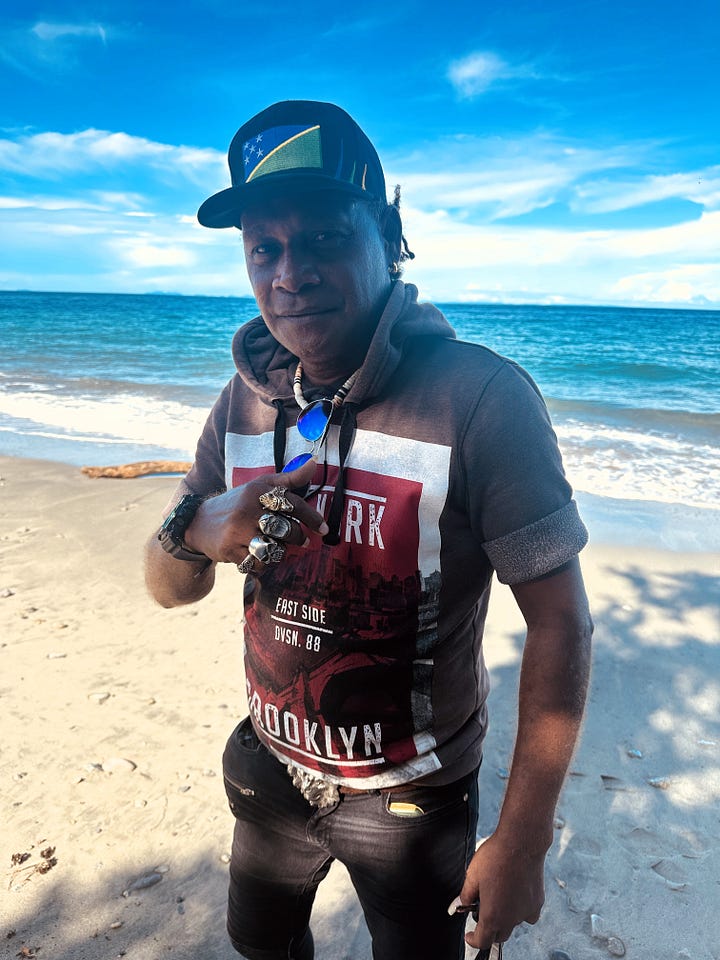
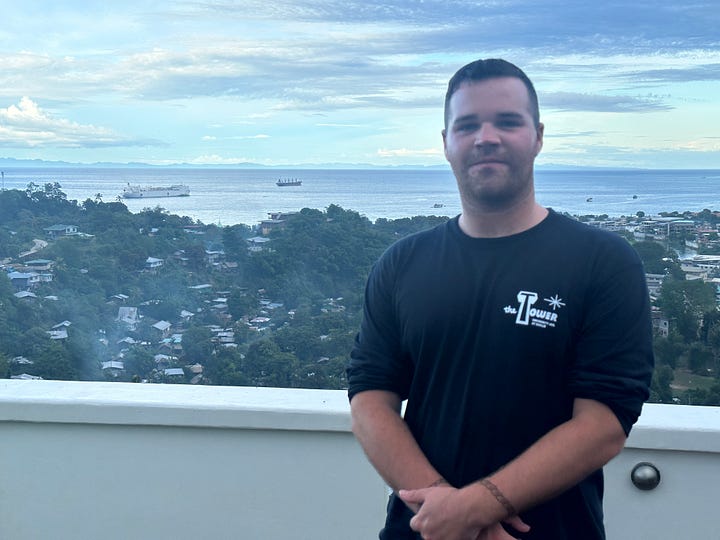
Together with his shipmate, the one who actually turns the steering wheel (known as the ‘AB’), I received some quick nautical facts from these seamen. There are some ‘cool jobs’ out there, and luckily, I’ve got one of them too. Interesting it is to hear about what others might classify as routine – such as SOLAS (safety of life at seas), water tight compartments at every level and the number and mechanics of anchors and motors - then I think of when I drop the lingo of my lines as mere lists of duties too and how the faces of others also light up in awe.
It's 3:37pm and Kelly is keen to have me join them. “C’mon, join us for the ride”, he coaxes. While I preferred to amble at the beach, his point about the decrease in frequency of local transport was a solid one. So I hopped in with the guys and bopped away to blaring reggae. The jeep’s first stop was a local roadside BBQ with chicken, squid, wieners, corn and fried banana fired up on the grill. Fishing meets fire - a solid combo of human endeavour.
Then, we headed to the local market where I tried ngali nuts. Housed in a larger rounder shell, they’re generally sold with just their soft brown slips. The white inside could almost be mistaken for a diced up garlic where, like oranges, slivers come apart naturally. The nut is refreshing and seemed to crunch more like a boiled watercress than what I’ve experienced from the hardheaded nut family.
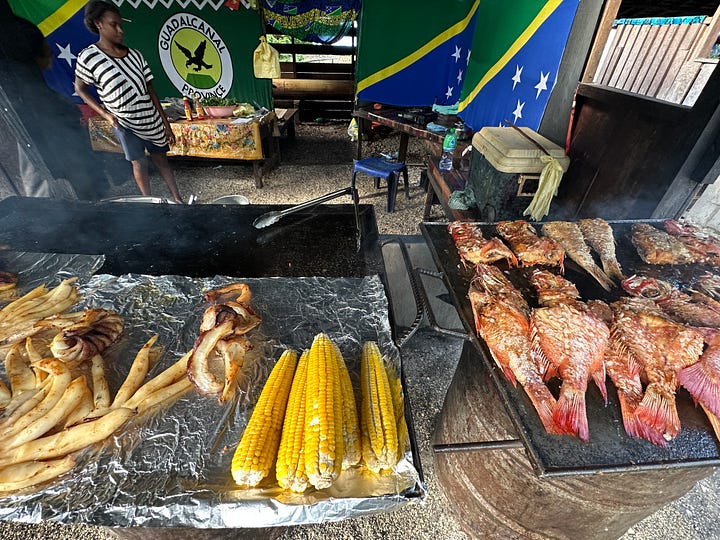
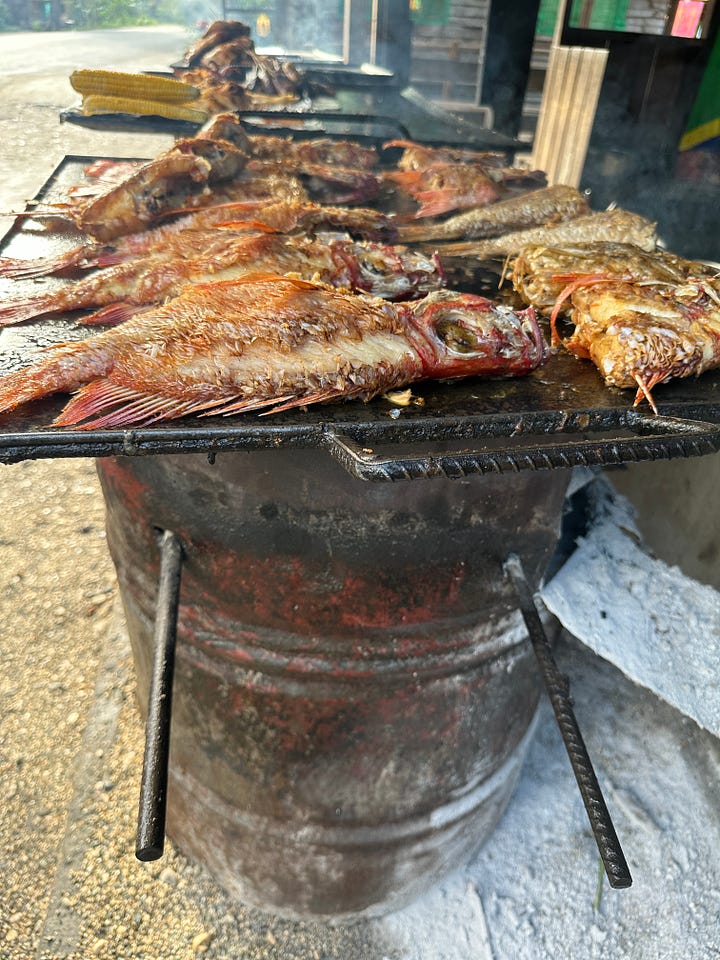
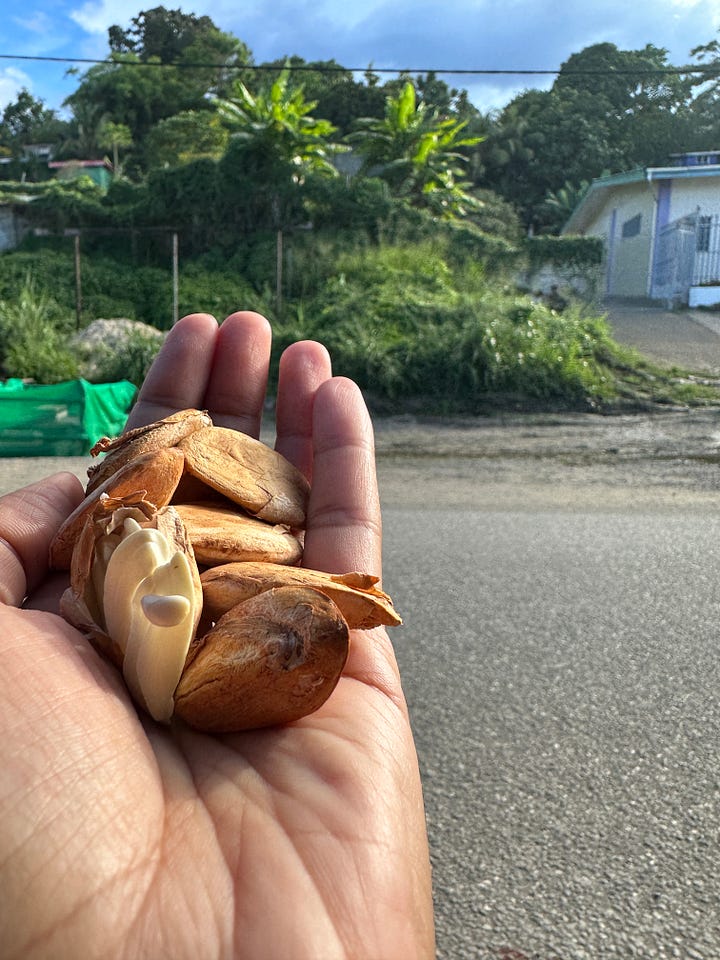
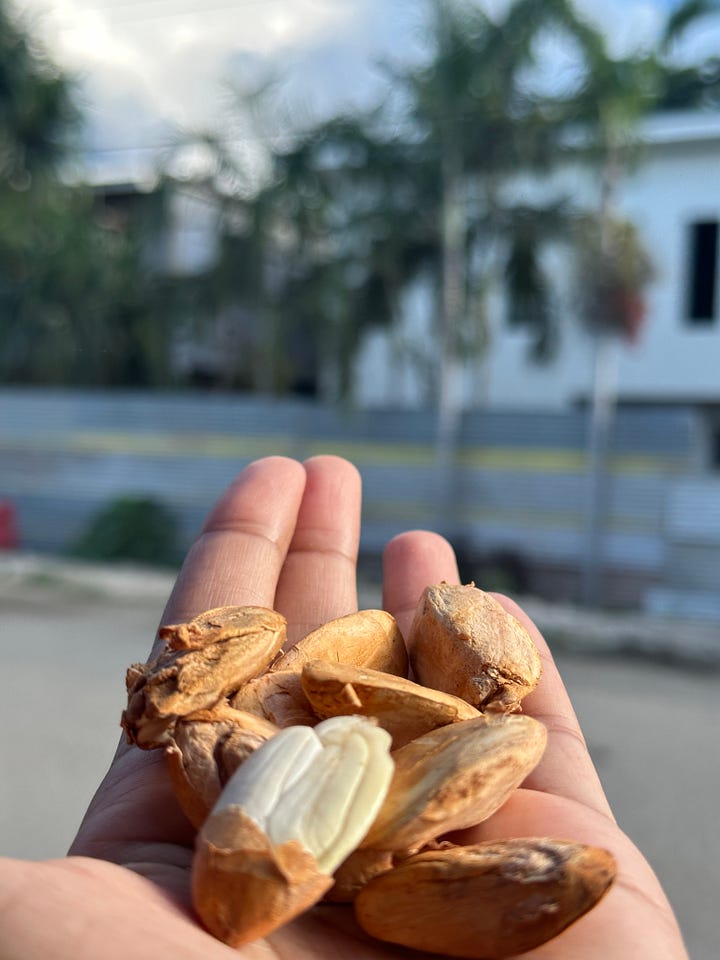
We whizzed by the city. It was time to turn our attention to Battlefields. Solomon Island’s real estate attracted the Japanese and Allied forces during WWII. So much so that the country now boasts a plethora of planes and boats, relics from the warfare of the past. To that end, the infamous 600 meter deep “Iron Bottom Sound” (previously known as Savo Sound) marks the spot where over 50 planes and ships had sunk between 1942-43 during the Guadalcanal campaign.

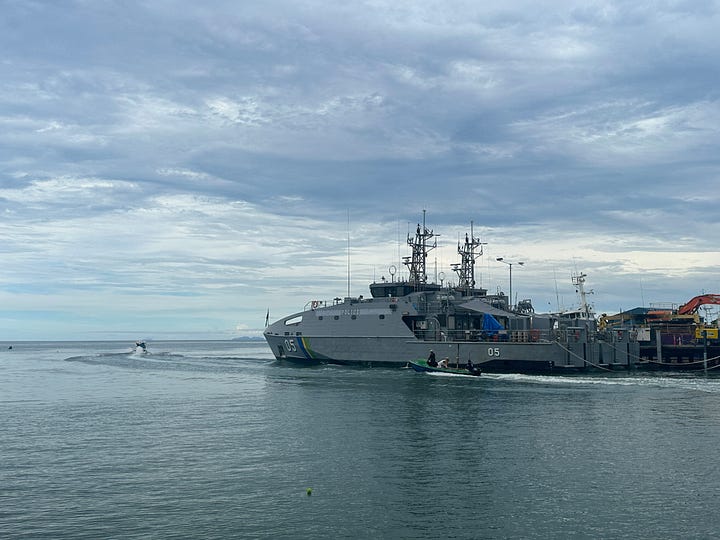
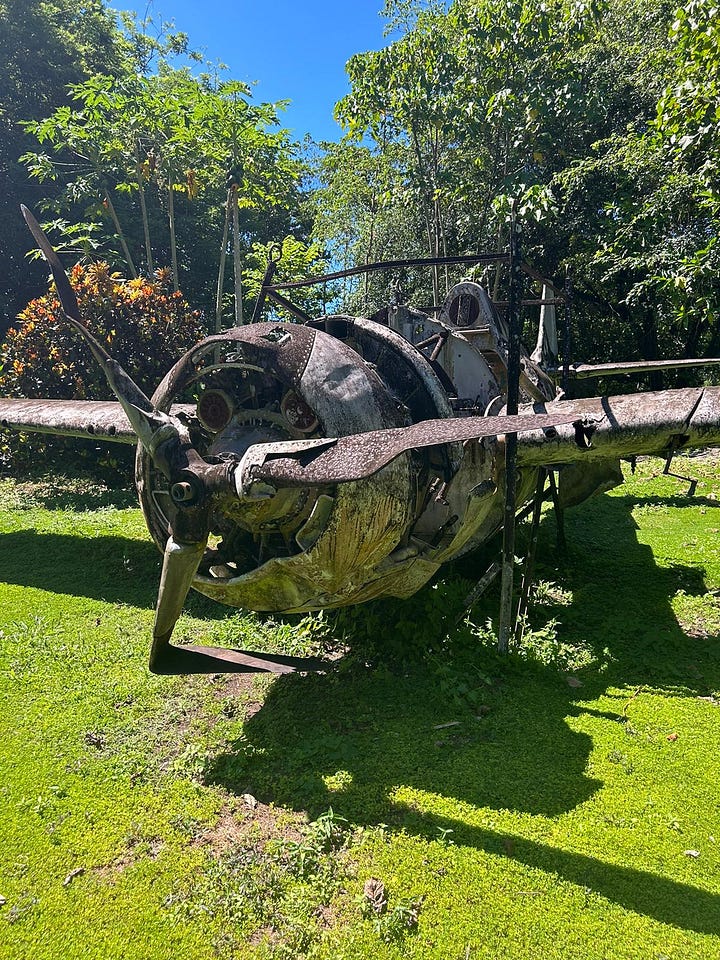
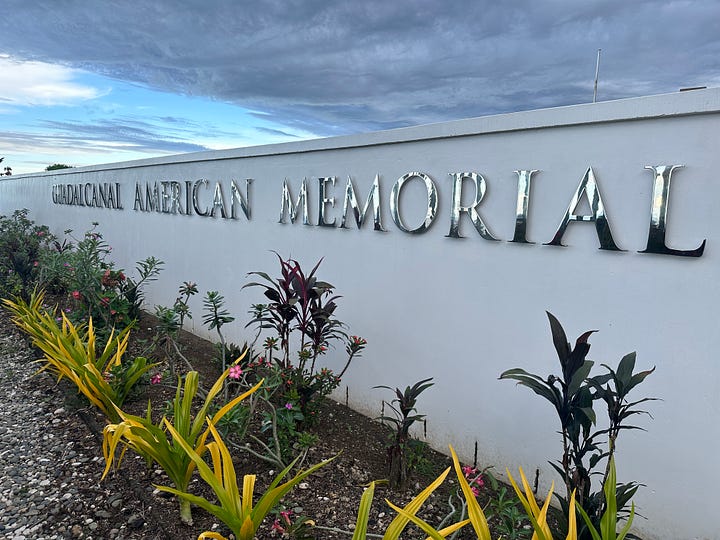
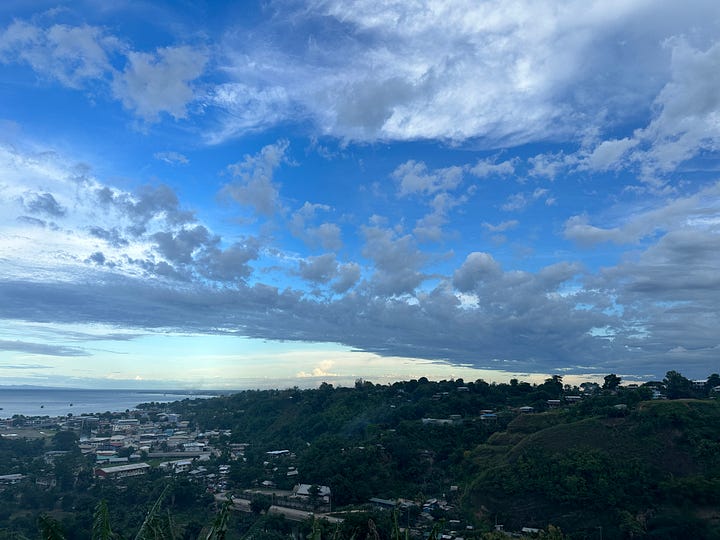
The moon catches my eye as the sun starts to set, we’ve been driving around the ring road later than I wanted - but all things considered, it’s been smooth sailing. As dusk settles in, another chapter begins. From the intriguing traditional dances of Malaita and the frog dance from the Western Province of Tomoko to the night the navy took to the stage too, the nights here have brought live music that we’ve all been blessed to enjoy.
Whether in a parking lot or park, beach or battlefield, Solo has treasures above, beneath and beyond its lands.
May our planet and people find and fully commit to peace,

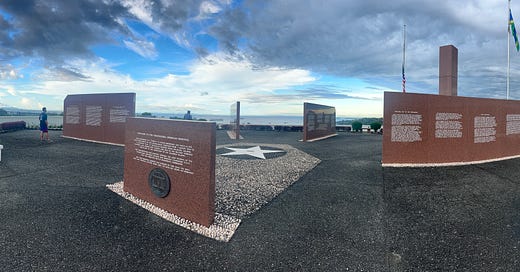


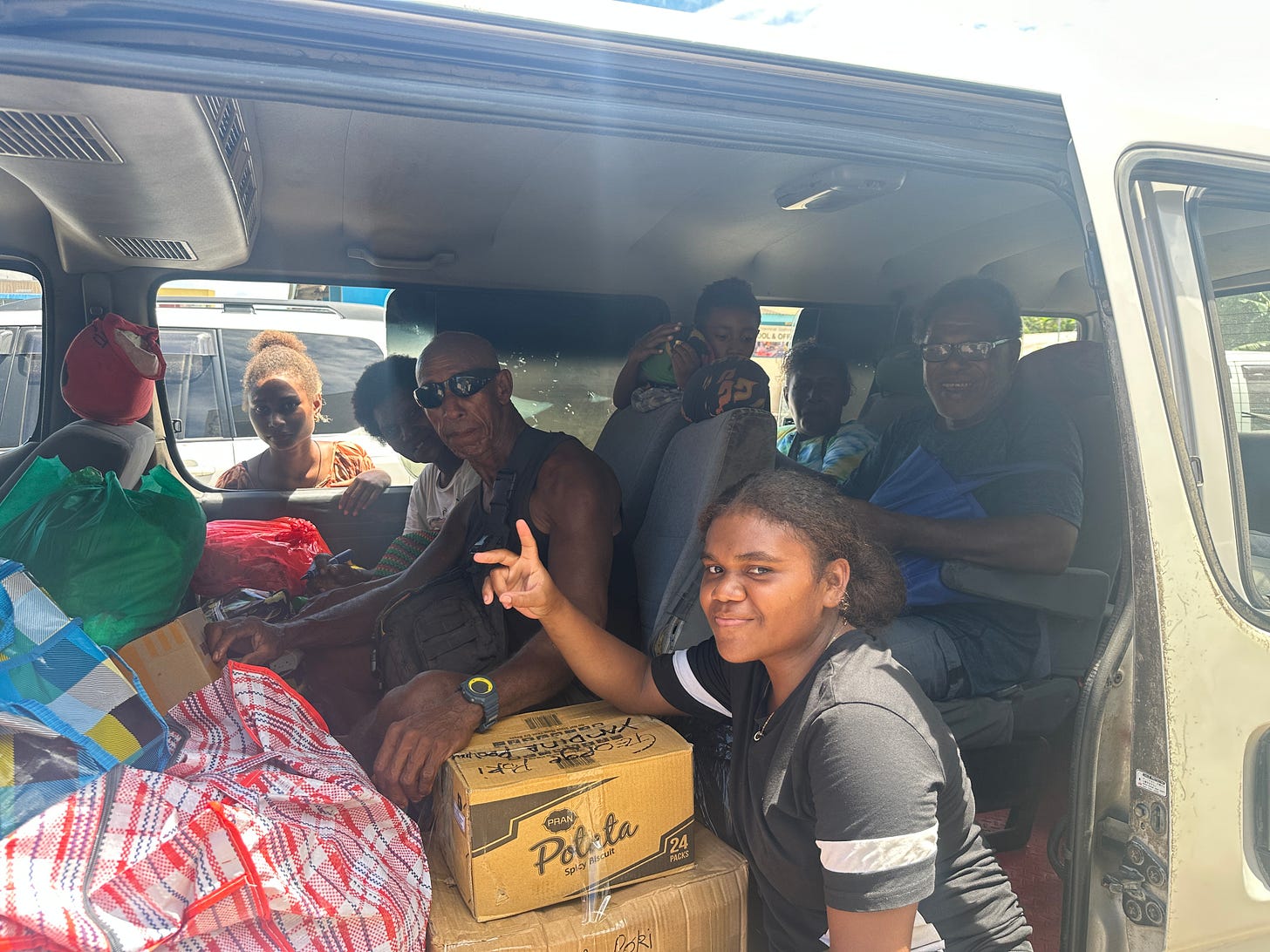


Great article once again. How come amongst the town, the locals, the market, the beaches etc we never get to see your image in the photos??